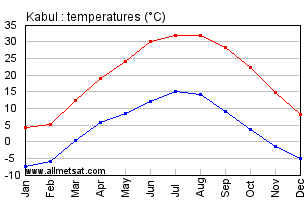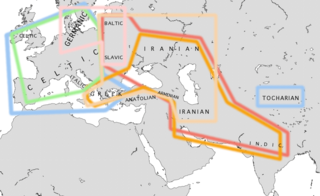Aupmanyav
Be your own guru.
Kindly allow me quote a correspondence between our member Exile and myself on the topic:
The climate of around Hindukush mountains is nothing like what is mentioned in Vedas - Seven and a half month of continuous sunshine and two months of long dark and cold night punctuated by a dawn and a twilight lasting for 30 days. That can happen only very close to the poles, something like 82 degree North.
Hindukush weather is indicated by this chart of yearly weather in Kabul, Afghanistan.

Exile said:The first problem that came to mind in regard to Tilak's deductions is in his assertion that the place-names in the Avesta were reallocated after the Aryan migration from the norther pole. I find it hard to believe that all 16 of those place-names would have been reallocated, but maybe there's something I missed. Furthermore Micheal Witzel appears to have proved in his "The Aryan Homeland" the placement of these lands and that the climate of the Hindu Kush with 10 months of winter and 2 months of summer corresponds perfectly with the accounts of the Vendidad. On the other hand I do recall Tilak refer to accounts (among the Greeks I believe) of a circular motion of the stars around the axis, like an twisting umbrella. I've never been to Afghanistan, but is it possible that that is what the celestial sphere looks to be doing in that region of the world?"
The climate of around Hindukush mountains is nothing like what is mentioned in Vedas - Seven and a half month of continuous sunshine and two months of long dark and cold night punctuated by a dawn and a twilight lasting for 30 days. That can happen only very close to the poles, something like 82 degree North.
Hindukush weather is indicated by this chart of yearly weather in Kabul, Afghanistan.



